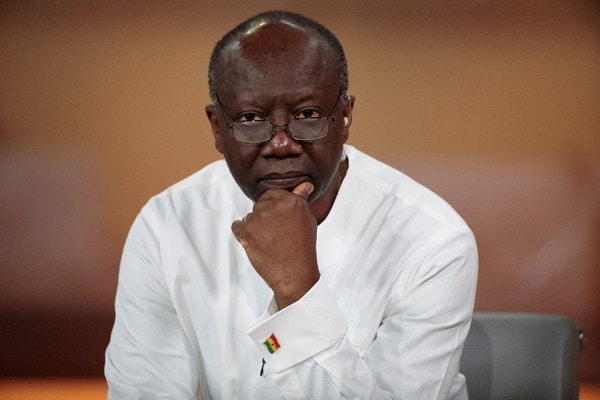The rating firm however maintained the country's Issuer Default Rating (IDR) at 'B.'
Fitch revises Ghana’s economic outlook to negative
International credit rating firm Fitch Ratings has revised the economic outlook on Ghana’s long-term credit from stable to negative.
The rating firm also affirmed Ghana’s long-term foreign currency Issuer Default Rating (IDR) at ‘B’.
Fitch explained that the revision of the outlook reflects the significant deterioration in public finances stemming from the COVID-19 pandemic.
The rating firm also attributed the ‘B’ IDR rating due to the lack of a clear majority in parliament following the December 2020 elections, indicating that it further increases the risk of fiscal slippages.
The implication is that Ghana’s debt affordability metrics would remain significantly weaker than rating peers over the rating horizon.
“This is balanced against Fitch’s expectation of a recovery in economic performance and a stabilisation of debt/Gross Domestic Product (GDP) and the ready availability of external and domestic financing,” Fitch said on Tuesday, June 22.
According to Fitch, public finances remained the key rating weakness for Ghana after achieving a general government deficit on a commitment basis below 5% of GDP in the three years before 2020.
The deficit widened to 11.5% of GDP following the approval of a mid-year supplementary budget that contained an additional 3% of GDP in COVID-19-related spending.
When arrears clearance and support for the financial and energy sectors are added, the cash deficit reached an estimated 14% of GDP.
It is also expected that the country would have a significant fall in the cash deficit to 8.3% of GDP by 2022, but this would remain above the 2022 ‘B’ median of 4.8%.
The higher cash deficits would be experienced in 2021 and beyond. The country continues to deal with the legacy of domestic payment arrears built up before 2017 and from contingent liabilities in the energy sector.
Again, public sector debt/GDP is likely to plateau over the medium term, but Ghana’s debt metrics will remain weak relative to ‘B’ peer medians.
“We forecast general government (GG) debt to reach 81% of GDP in 2021, including 2.5% of GDP in bonds held through the Energy Sector Levy Act Plc., which is excluded by the government,” Fitch stated.
It further stated noted that the general government debt now constitutes 535% of government revenue, compared with the 2020 ‘B’ median of 304%.
Nonetheless, there are some positives, as it is expected that a post-pandemic recovery would lead to recovery in government revenue.
Ghana also has good access to fiscal and external financing, with the government having issued $3 billion in Eurobonds in March 2021 and awaiting another budget approval to issue an additional $1 billion.
This, according to Fitch, would be “Enough to cover the $3.3 billion in external debt principal and interest payments that we estimate for 2021.”
Meanwhile, the domestic debt markets remained liquid and domestic debt yields remained broadly stable over 2020, as the government increased its domestic issuance.
The government placed GHS10 billion (6% of GDP) of debt directly with the Bank of Ghana (BOG) as part of emergency financing measures.
As a one-off reaction to the pandemic, Fitch does not expect this to affect macroeconomic stability significantly, but additional direct financing by the central bank would signal financing stress and could contribute to macroeconomic instability, as occurred in the years directly before 2017.
READ ALSO: Fitch Maintains Ghana Credit Rating At ‘B’ With Stable Outlook
CPI growth slowed to 7.5% year-on-year in May 2021, down from 11.3% in May 2020. The slowing inflation allowed the BOG to lower the main policy rate by 100bp to 13.5%, but Fitch forecast a 2021 annual average inflation at 9%.
Fitch forecasts Ghana’s gross FX reserves (excluding oil funds and encumbered assets) will end 2021 at $7.6 billion, or 2.9 months of current external payments.
Recent consolidation in Ghana’s banking sector has led to fewer contingent liabilities to the sovereign.
We estimate that the government has realised a total cost of GH₵19 billion (5% of 2020 GDP) over 2018 to 2020 as part of a BOG-led financial sector clean-up, which has also improved banks’ capitalisation and liquidity ratios.
Non-performing loans stood at 15.5% of total loans in March 2021, up from 13.6% at the beginning of 2020, and the real private sector credit growth is expected to accelerate in 2021 but would remain in the low single digits.



